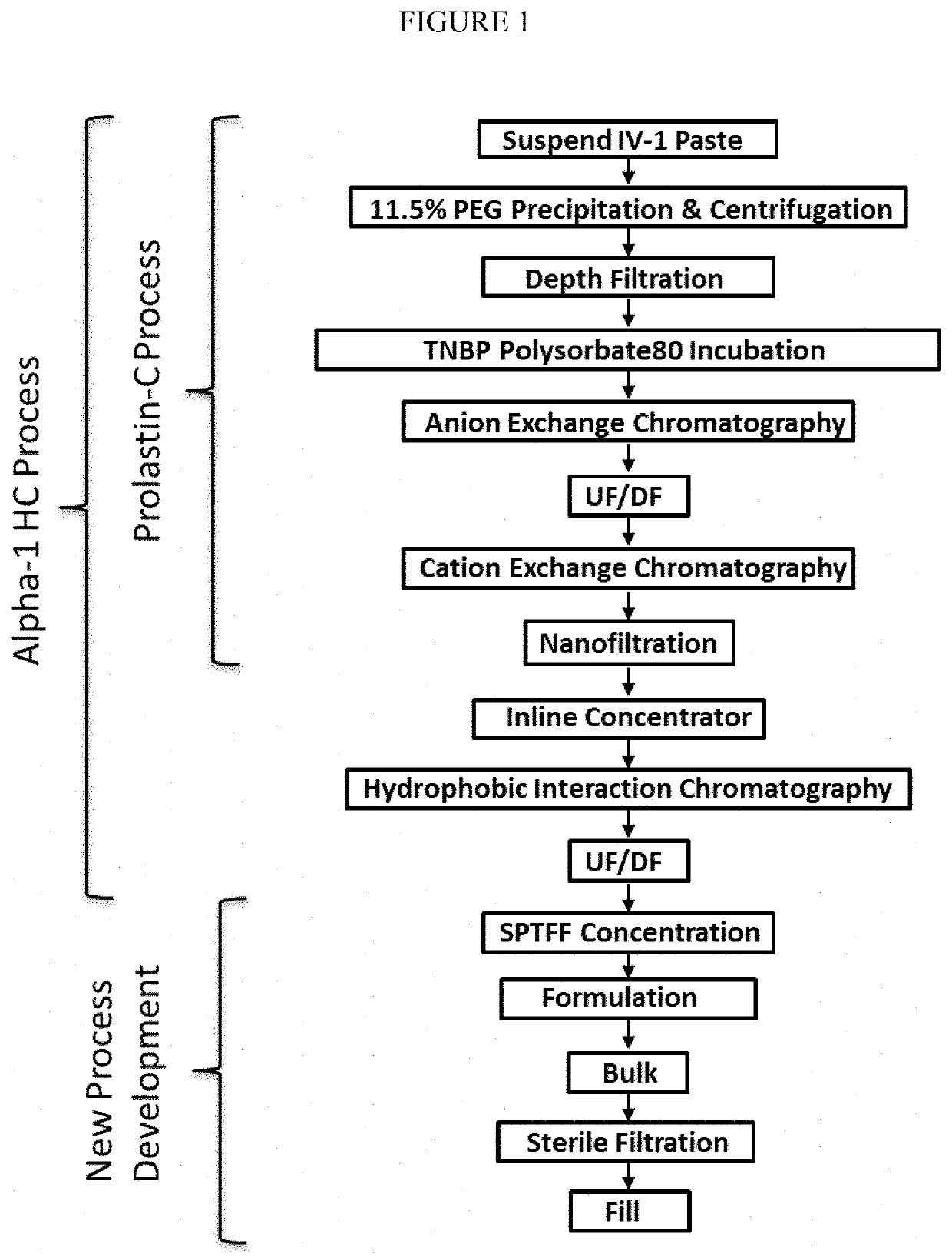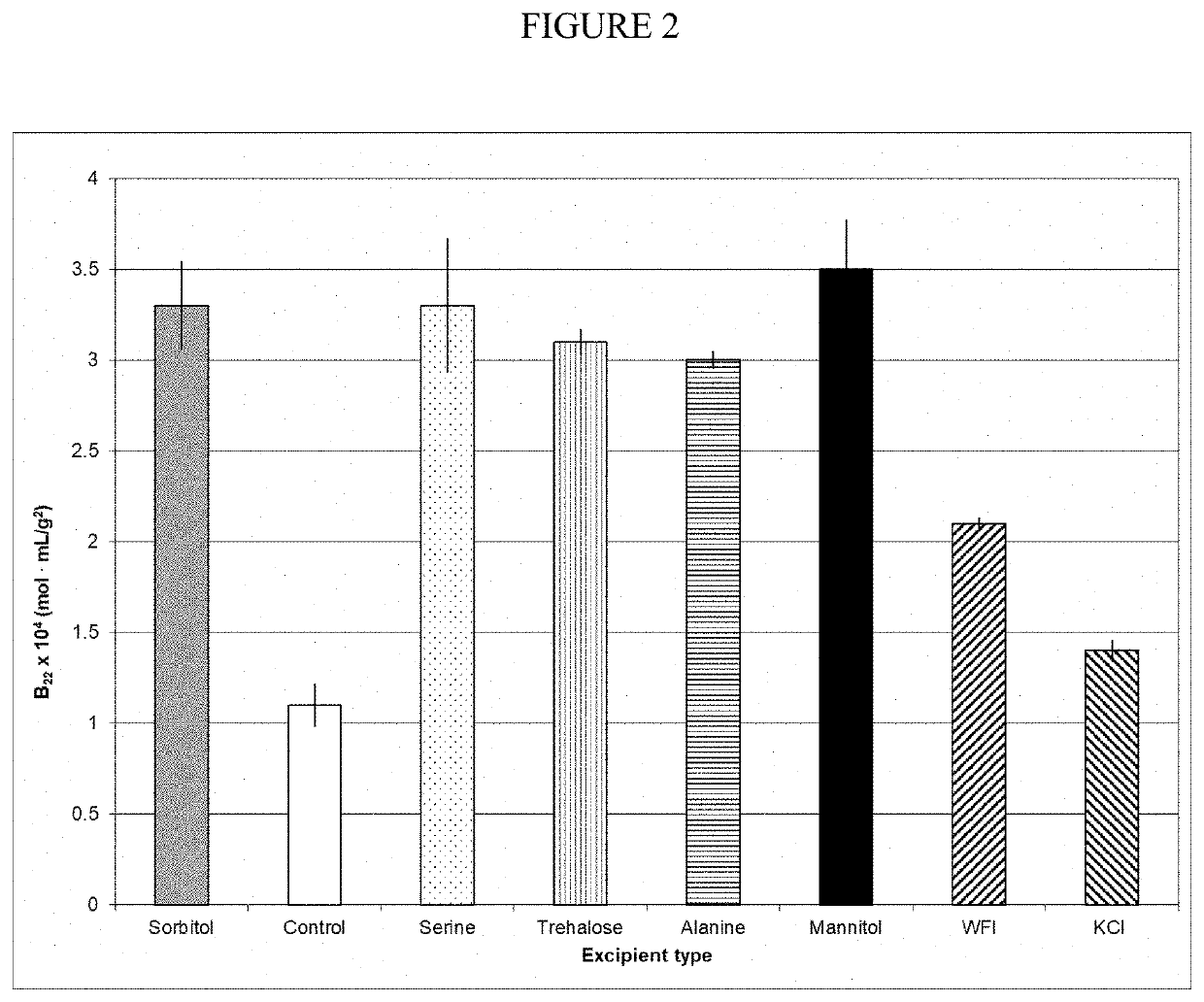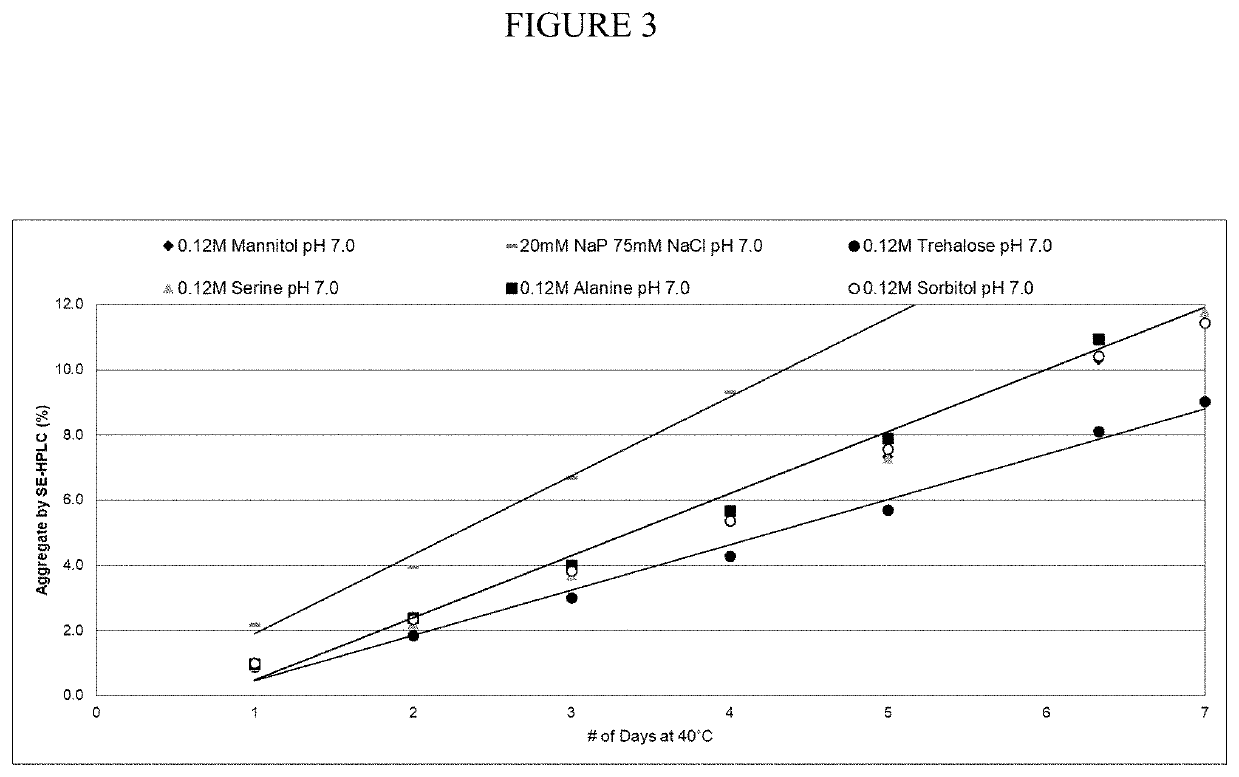Composition comprising highly-concentrated alpha1 proteinase inhibitor and method for obtaining thereof
a proteinase inhibitor and high-concentration technology, applied in the direction of peptide/protein ingredients, spray delivery, aerosol delivery, etc., can solve the problems of immediate hypersensitivity reactions, inability to generate high-level aggregates, and respiratory complications
- Summary
- Abstract
- Description
- Claims
- Application Information
AI Technical Summary
Benefits of technology
Problems solved by technology
Method used
Image
Examples
example 2
[0052]Evaluation of B22 Value as a Indicator of Aggregation in the Uncharged Excipients A1PI Solutions Obtained with the Process of the Present Invention.
[0053]The process of the present invention involves a SPTFF concentration with WFI and a formulation with uncharged excipients. Several of the uncharged excipients at 0.12 M concentrations, pH 7.0, as well as low pH or high salt formulation controls, were used to make 20% A1PI solutions and applied to Self-interacting chromatography (SIC) columns produced by conjugating A1PI to a Toyopearl AF-formyl-650M (Tosoh Biosciences) resin, and the retention time recorded. The retention time of the protein was converted to the osmotic second virial coefficient (B22), which is a measure of protein-protein interactions. FIG. 2 presents a plot of B22 vs excipient type. The higher the B22 value the greater the protein-protein repulsion (preferred to minimize aggregation) (Payne et al., “Second Virial Coefficient Determination of a Therapeutic Pe...
example 3
[0054]Evaluation of A2PI Aggregation in the Uncharged Excipients.
[0055]Thermal kinetics studies of 20% A1PI formulations at 40° C. measured accelerated aggregation by SE-HPLC over time. A1PI 20% solutions of various 0.12 M excipient formulations (mannitol, alanine, serine, sorbitol, and trehalose) at pH 7.0, along with the control formulation (16 mM sodium phosphate, 60 mM NaCl, pH 7.0), were incubated at 40° C. for 7 days and analyzed by SE-HPLC (FIG. 3). These data grouped in three categories, with the control formulation having the highest aggregation rate, as expected, while mannitol, alanine, serine and sorbitol had an intermediate aggregation rate, and trehalose had a significantly lower aggregation rate than the others. In conclusion, the results show that less aggregation occurred in the presence of uncharged excipients, compared with the control.
example 4
[0056]Evaluation of A1PI Stabilily in the Presence of Uncharged Excipients.
[0057]On the other hand, the aggregation was measured by SE-HPLC over time and at different A1PI concentrations in the presence of charged and uncharged excipients. A1PI solutions of FIG. 4 show the aggregation percentage in vials stored at 5° C. A1P1 at 50 mg / mL (diamonds) and A1PI at 200 mg / mL (circles) with salt to control osmolality, and A1PI at ˜200 mg / mL formulated in only 0.12M trehalose (triangles) show different rates of aggregation. Similar to what Bauer (U.S. Pat. No. 7,879,800) showed in Table 12, the 20% A1PI formulated in 20 mM sodium phosphate 75 mM sodium chloride, pH 7.0 had a very high rate of aggregation, compared to A1PI in similar excipients at 5%. However, the 20% A1PI formulated with only 120 mM trehalose, pH 7.0 showed much less aggregation under identical storage conditions.
PUM
| Property | Measurement | Unit |
|---|---|---|
| concentration | aaaaa | aaaaa |
| concentration | aaaaa | aaaaa |
| concentration | aaaaa | aaaaa |
Abstract
Description
Claims
Application Information
 Login to View More
Login to View More - R&D
- Intellectual Property
- Life Sciences
- Materials
- Tech Scout
- Unparalleled Data Quality
- Higher Quality Content
- 60% Fewer Hallucinations
Browse by: Latest US Patents, China's latest patents, Technical Efficacy Thesaurus, Application Domain, Technology Topic, Popular Technical Reports.
© 2025 PatSnap. All rights reserved.Legal|Privacy policy|Modern Slavery Act Transparency Statement|Sitemap|About US| Contact US: help@patsnap.com



